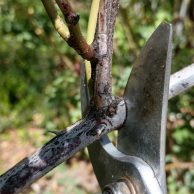 We recently passed Boulder Valley’s “average last frost” date (May 9).With all this rain, it sure feels like Spring! Lots of gardeners are asking if it’s safe to prune now, especially roses and shrubs. The answer is YES! But…..
We recently passed Boulder Valley’s “average last frost” date (May 9).With all this rain, it sure feels like Spring! Lots of gardeners are asking if it’s safe to prune now, especially roses and shrubs. The answer is YES! But…..
Pay attention to the characteristics of the particular shrubs and roses you’re thinking of pruning.
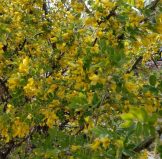
Caragana pygmaea, Pygmy Peashrub
If the shrubs in question won’t be in bloom until summer or fall (for example: Blue Mist Spirea, Rose of Sharon, Russian Sage, Rabbit Brush, Seven Sons, Butterfly Bush, ‘Mongolian Gold’ Bush Clematis), now is a great time to prune them for compact form, removal of winter-kill and dead tips. These shrubs bloom on new (this year’s) wood, so you won’t be diminishing their bloom potential by pruning now.
However, if they are spring-flowering shrubs (and most of our temperate-zone shrubs are – Lilacs, Snowmound Spirea, Weigela, Sand Cherry, Ninebark, Kerria, Serviceberry, Elderberry, Peashrub, Mockorange, Fernbush, Aronia (Chokeberry), Apache Plume, Waxflower, Boulder Raspberry, Viburnum, etc.), pruning in spring would remove most or all of the blooms (and subsequent fruits) for this year. If you can, wait until these shrubs have finished blooming, then prune as soon as possible, before new woody growth has begun.
Most of the Old Garden, Antique or Heirloom Roses bloom generously in one extended flush in spring or early summer. These varieties bloom on wood produced in prior years. Unless you are willing to sacrifice this year’s blooms, wait until they are finished blooming and prune soon afterward.
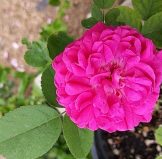
Rose de Rescht
Some Old Garden roses give repeat bloom, like Rose de Resht and other ‘Portland’ or ‘Damask Perpetual’ roses, Louise Odier and other ‘Bourbon’ roses, and some of our favorite ‘found’ roses discovered in old cemeteries, farms and alleys, like “JoAn’s Pink Perpetual” and “Fairmount Proserpine”. These bloom first on ‘old’ wood, then send up new canes topped by bloom clusters a month or more later. We recommend doing any necessary pruning immediately after the first flush of blooms has ended.
Cuts made in late spring/early summer may be more vulnerable to Rose Cane Borers, so after making cuts in live wood, apply dark-colored nail polish to the cut ends to disguise the cuts, which the borers expect to be white. When examining rose canes, you should also be on the lookout for evidence of Rose Cane Girdler damage. The adult insect is a type of saw-fly which pierces the bark or skin of a rose cane and injects its eggs. These hatch and the larvae eat the cambium layer under the bark, weakening ad ultimately killing the portion of the cane above the damage site. You can tell where this is happening because the larvae will cause the bark to swell where the larvae are eating their way around the cane. Prune the damaged canes to at least 2″ below the swelling, and destroy the swelled area (soak in soapy water or in rubbing alcohol)
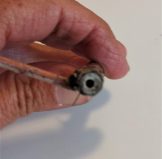
Rose Cane Borer Damage
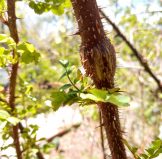
Rose Cane-Girdler Swelling
Most modern ‘Shrub’ roses bloom repeatedly through the season. These can be pruned prior to blooming, or after the first flush of blooms. Early pruning may delay the onset of flowering, but shouldn’t affect the overall blooming potential for the season.
Learn more about pruning and caring for the container-grown, own-root roses we offer at Harlequin’s Gardens.
